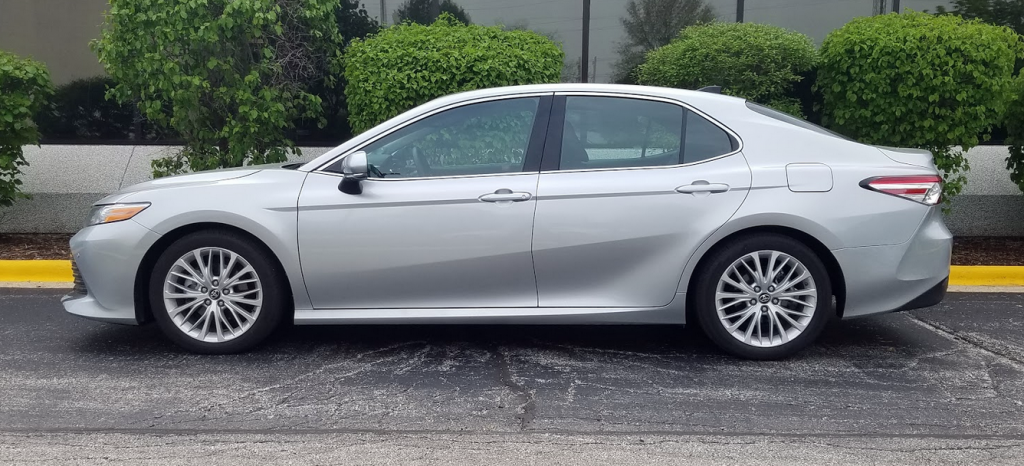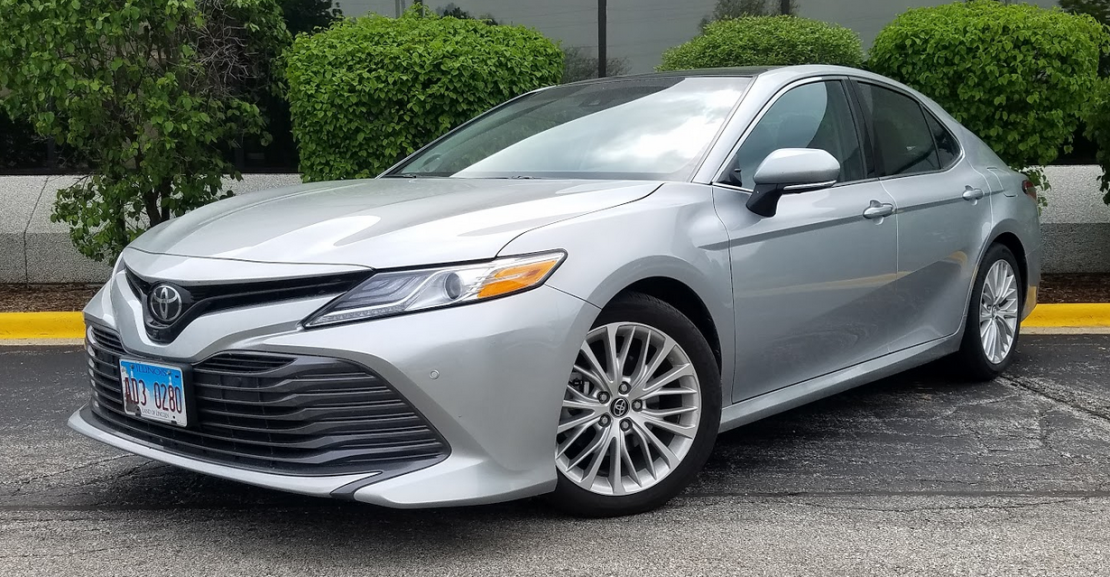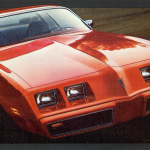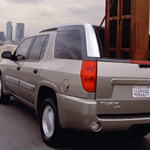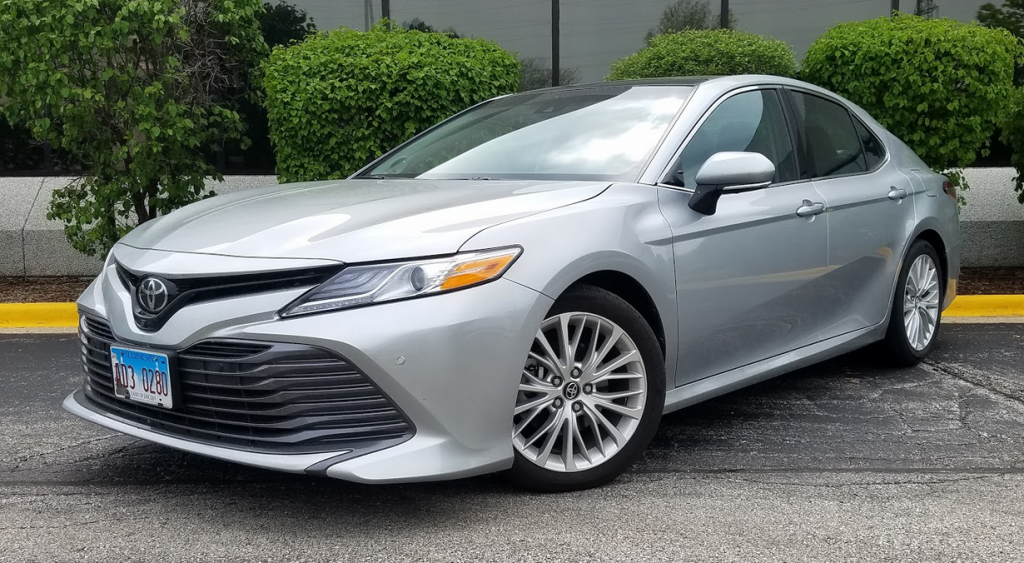
 2018 Toyota Camry XLE
2018 Toyota Camry XLE
Class: Midsize Car
Miles driven: 543
Fuel used: 19.5 gallons
Real-world fuel economy: 27.8 mpg
Driving mix: 60% city, 40% highway
EPA-estimated fuel economy: 28/39/32 (city/highway/combined)
| CG Report Card | |
|---|---|
| Room and Comfort | B+ |
| Power and Performance | B- |
| Fit and Finish | A- |
| Fuel Economy | B |
| Value | A- |
| Report-card grades are derived from a consensus of test-driver evaluations. All grades are versus other vehicles in the same class. Value grade is for specific trim level evaluated, and may not reflect Consumer Guide's impressions of the entire model lineup. | |
| Big & Tall Comfort | |
| Big Guy | A- |
| Tall Guy | A- |
| Big & Tall comfort ratings are for front seats only. "Big" rating based on male tester weighing approximately 350 pounds, "Tall" rating based on 6'6"-tall male tester. | |
Base price: $28,450 (not including $895 destination charge)
Options on test vehicle: Driver Assist Package ($1675), panoramic glass sunroof ($1045), Audio Package ($1800), illuminated door sills ($299), carpet/trunk mat set ($224)
Price as tested: $34,388
Quick Hits
The great: Comfortable, roomy cabin
The good: Ride/handling balance; decent acceleration from 4-cylinder engine
The not so good: Slightly disappointing fuel economy compared to EPA estimates
More Camry price and availability information
John Biel
It’s no guarantee, but one of the things that can help a vehicle become a Consumer Guide® “Best Buy” is to be versatile. Fundamentally good cars, trucks, and SUVs start to look even better when they can address a variety of customer tastes, needs, and budgets.
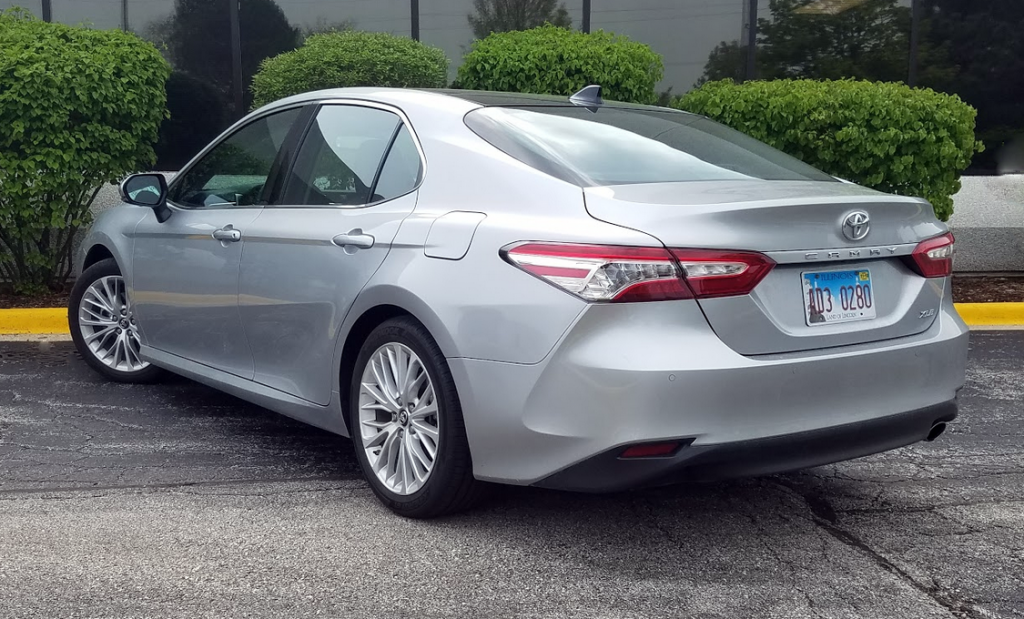
Take the Toyota Camry, a CG Best Buy in the midsize-car class. The 2018 XLE that the editors tested was the third of the fully redone sedans that they’ve sampled (after a Hybrid XLE and a V6 XSE), each with a different powerteam. Overall there are five 4-cylinder trim levels, three varieties of hybrids, and two ways to get a V6. Toyota spreads the Camry’s good stuff around pretty well, and base prices with delivery start at less than $25,000 for two of the 4-cylinder models.
As an XLE, the test car was near the top of the 4-cylinder line and, thus, more expensive. At $28,450 to start, it is just $550 cheaper than the sportier XSE; with options and delivery, CG’s tester finished at $34,388. That made it similar in many ways to the other ’18 Camrys we’ve tested save for the engine.
Steve and Johnnie Road Test: 2018 Toyota Camry XLE
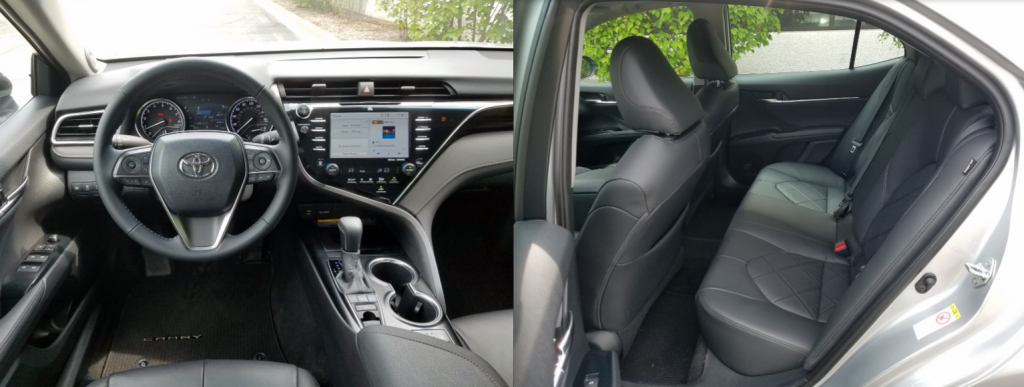
The 2.5-liter four used in most non-hybrid models gains 25 horsepower for 2018, now putting out 203 horses. (The count is 206 in the 4-cylinder XSE.) It’s a nice engine for this car, with good getaway from stops and no-drama expressway merging. It’s just not as stirring as the 301-horsepower V6, which is an option for the XLE. This driver wrung some good open-road speed out of the 2.5, but it worked up to it with an obvious sense of exertion. Switching into the “Sport” mode from “Normal” also doesn’t seem to have the same impact it does in the V6 either. The new 8-speed automatic standard for all gas-only Camrys does perform well.
Of course, the four outperforms the V6 in fuel economy. Its EPA ratings of 28 mpg in the city, 39 on the highway, and 32 combined are six to seven mpg better than what’s expected from the V6. That said, this driver saw only 27.7 mpg after putting 241 miles on the test car, with 65 percent city-type operation.
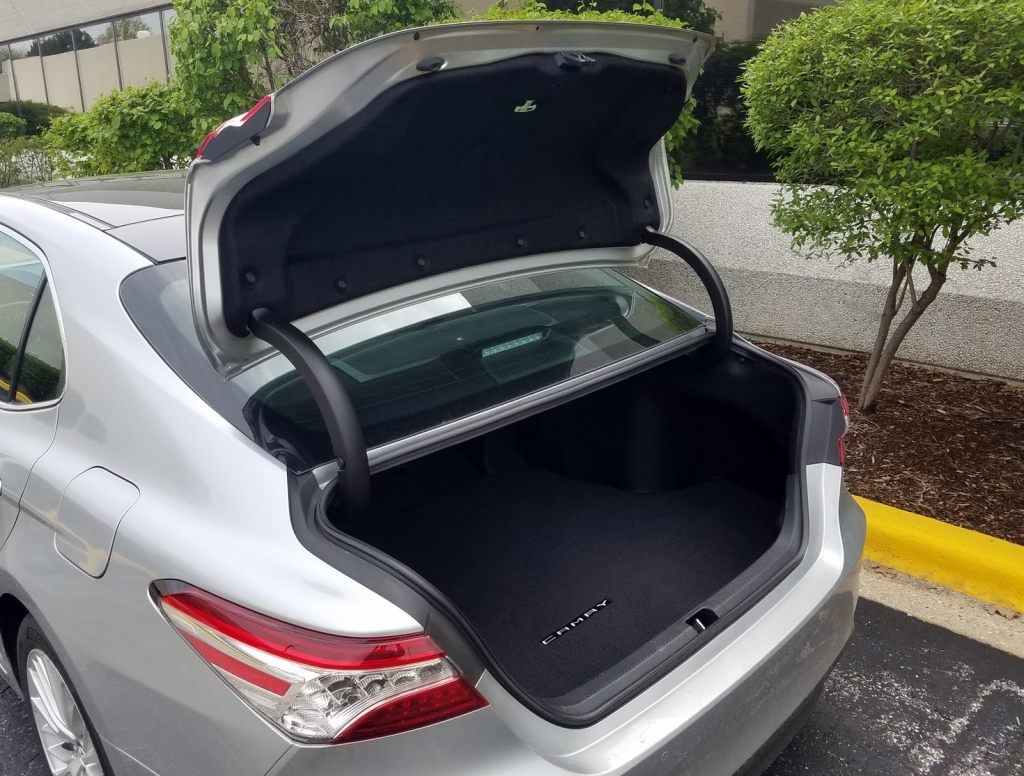
With the Camry’s switch to a version of Toyota’s New Global Architecture platform comes a new multilink rear suspension. Ride and handling are good—perhaps a little softer than in the sport-tuned XSE. Any ’18 Camry we’ve driven has displayed fine braking.
If we’ve said it before about the new Camrys, we’ll say it again:
- Interior space is family friendly, with good head- and legroom in both rows, and enough rear-seat room to hold up to three adults if needed.
- Seats are comfortable and supportive.
- Driver vision is fairly clear to nearly every angle; if it suffers anywhere, the somewhat-wide rear roof pillars are to blame.
- Large, colorful controls face drivers, but some windows in the central vehicle-information display can be crowded and difficult to decipher at a glance.
- Controls for audio and climate systems use a mix of dials for station tuning and temperature selection with small, shallow toggle switches for other functions that aren’t as handy as the dials. Still, a no-tricks infotainment system makes it easy to save and access audio presets.
- For cabin storage there is a wide—but low-set—glove box, a moderately sized console box, a pull-out bin in the dash to left of the steering column, pouches on the backs of the front seats, door pockets (bigger in front) with bottle holders, and open cup holders in the console and the pull-down armrest in the center of the rear seat.
- Ample trunk space is shaped for cargo versatility, and gooseneck hinges are covered to protect stored items. The 60/40-split seatbacks fold for additional capacity, though they rest a few inches above the trunk floor, and a bulkhead behind the seats further restricts what can pass through.
Test Drive: 2018 Toyota Camry Hybrid XLE
Toyota stocks the Camry XLE with an admirable level of standard equipment. Interiors feature leather upholstery, heated 8-way power front seats, a leather-wrapped steering wheel, Tiger Eye wood trim, the 7-inch thin-film transistor vehicle information display, and keyless entry and starting. Safety-related gear runs to a blind-spot monitor; rear cross-traffic alert; and the Safety Sense-P package of forward collision warning and mitigation with pedestrian detection, lane-departure warning and mitigation, automatic high beams, and adaptive cruise control. Infotainment and comfort items are an Entune 6-speaker audio system with navigation, app suite, Bluetooth connectivity, and 7-inch touchscreen, and dual-zone automatic climate control. External specifics are 18-inch alloy wheels, automatic LED headlights, heated power mirrors, and a chrome exhaust finisher.
The test car went further with a number of options—package and individual—that added things like a head-up display, surround-view camera, enhanced audio, and wireless charging for smartphones. Overhead was a panoramic glass roof with a power-opening forward section. Unfortunately, a loose plastic cover for the divider between the moving and fixed portions of the roof was wont to come unattached whenever the inside sun shade was retracted.
Though the 4-cylinder Camry XLE doesn’t meet every need the buyers of midsized sedans might like to have addressed, it does touch on a lot of them. There are other Camrys to fill other needs, and that’s how this Toyota vehicle line wins points for versatility.
